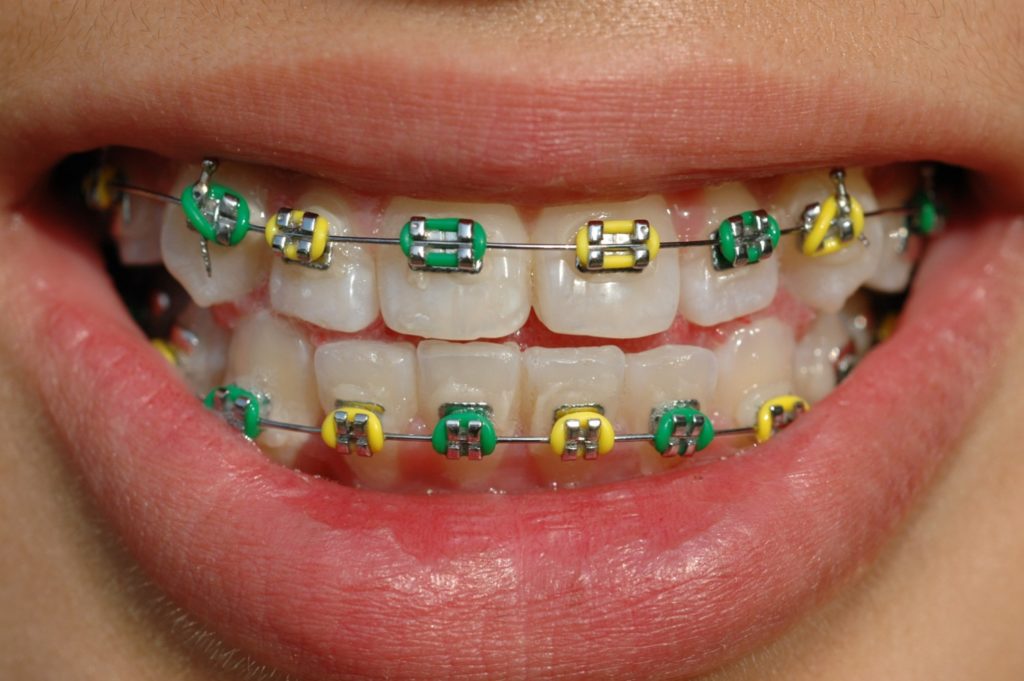If you’re a current orthodontic patient, chances are you already know a good deal about braces. Here at Dillehay Orthodontics, we often cover topics such as:
- what to expect when you get braces
- how often your braces will need to be adjusted
- what foods to avoid
- how to take care of your teeth and braces during treatment
- what results to expect from your orthodontic treatment
Many times, we will discuss the ins and outs of braces before your treatment even begins. But what about the actual mechanics involved in moving your teeth? When you know more about how braces are designed to align your teeth and jaw, it can give you a better understanding of, and appreciation for, what’s happening behind the scenes of your new smile!
What braces are composed of
When you want to understand how braces work to move your teeth, the first step is to familiarize yourself with the various parts they are composed of.
- Brackets – these are the metal or ceramic materials that are glued onto the surface of each tooth to keep them in place throughout your treatment. Brackets are the most visible part of your braces.
- Archwires – these thin, rod-like metal wires are placed over each bracket. This is the essential component for creating the pressure against the teeth that will gradually move them into the correct positions.
- O-Rings – also commonly referred to as ligatures, or ligature elastics. These are small elastic bands that hold the bracket onto the archwire. O-rings will usually be changed at each adjustment appointment. There are a wide variety of colored versions to choose from if you want to add a splash of personality to your smile, and we also offer clear or tooth-colored elastics for patients who prefer a more neutral look.
These components work together to exert constant pressure on the teeth, which will gradually move them into their proper positions over time. We will sometimes use springs or rubber bands along with the brackets, wires, and O-rings in order to exert more force in a specific direction. This explains what braces are made of, but exactly how do the teeth move?

Achieving movement through bone remodeling
It’s not only important to know what your braces are made of. You should also have some knowledge of how your teeth are constructed. Teeth are surrounded by gum tissue called gingiva at the top, while the bottom portion of the tooth is encased in the periodontal membrane. This is sometimes referred to as the periodontal ligament, or the PDL. Next to both of these is the alveolar bone.
When braces put pressure on your teeth, the periodontal membrane stretches on one side and is compressed on the other, which loosens the tooth. The bone then grows in to support the tooth in its new position. This is what we call bone remodeling, and it’s where the real orthodontic magic is at!
Bone remodeling is a biomechanical process. In response to sustained load-bearing activity like braces, the bones become stronger. Once the load has been removed, the bones will go back to their pretreatment levels of weakness and inactivity. How does this work? Bones are made up of cells called osteoclasts and osteoblasts. When the load on a bone is increased, osteoclasts are created, which will break it down in response to the load. Remove that load, and osteoblasts are created, which will produce new bone cells. This process is repeated throughout your treatment through the repetitive motion of tightening and adjusting your braces, increasing the bone density of your teeth.
Each tooth is also socketed in bone – the maxilla for the upper teeth, and the mandible for the lower teeth. The aforementioned PDL acts as a messenger between the teeth and surrounding bony sockets. The pressure between the PDL and bone is what causes the bone to create osteoclasts, and then break down the bone to restore the normal spacing between the teeth and bone. There is corresponding tension on the PDL behind the movement, which causes the bone to then create osteoblasts, effectively building new bone to fill in the difference. This will once again restore the normal spacing between teeth and bone. This process doesn’t require a huge amount of force, only an amount of force which is not normally present.
The osteoclast (breakdown) process can take a few days to get going, while the osteoblast (rebuild) process can take up to three months or more. Stabilizing the end result can take about a year, which is why it’s so important to wear your retainer after your initial treatment has ended! By wearing your retainer as directed by Dr. Dillehay or Dr. J.K., you will keep your teeth from shifting back to their original or intermediate positions.
What drives the force behind your braces
The brackets and archwires of your braces are what provide your teeth with the force that’s needed to create the kind of pressure that results in positive tooth movement. Archwires are generally made of materials that are activated by body heat to increase stiffness, but they tend to want to retain their normal shape. The initial wire we use with braces is called a twisted wire, and it is like a small cable that wants to remain straight. When it is put onto your teeth, this wire is activated by the heat of your mouth.
Later on in treatment, the twist wires will be replaced with a much more flexible kind of wire, usually, one that is made of a nickel-titanium alloy. This wire is also activated by body heat to become stiff. When the brackets are placed on your teeth and then tied to the wires, it completes the transmission of forces from the archwire to the teeth.
It’s the desire of the archwires to remain straight that provides the kind of force necessary to kickstart the biomechanical process of bone remodeling, and to keep it going throughout treatment. The end result of this remodeling is a beautifully aligned, fully functional smile!

A better smile with braces is waiting for you at Dillehay Orthodontics
Braces are only the initial phase of orthodontic treatment. The second stage starts once your braces come off, and it’s every bit as important as the first! Wearing the retainer we give you will continue to strengthen the bones inside the surrounding membrane until they are ready to support the teeth completely. This step ensures your smile stays straight, and that your teeth don’t gravitate back to where they used to be, so you don’t want to skip it.
Whether you’re just about to have braces put on, scheduling your appointment to have them taken off, or anywhere in between, our talented team is here to support you! We’re happy to answer any questions you have, discuss any concerns, or simply encourage you in your orthodontic journey. Dillehay Orthodontics is passionate about helping you find your best smile with braces!
